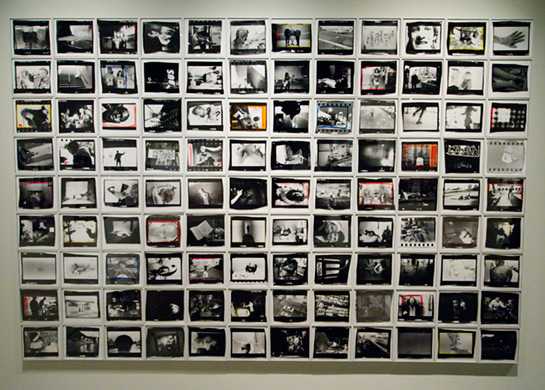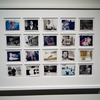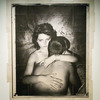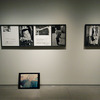Jim Goldberg and the Struggle of Photographic Storytelling

A recent work related trip took me to San Francisco, where I saw an installation of Jim Goldberg’s Raised by Wolves at Pier 24. Earlier this year, I had already come across an installation that was part of the Deutsche Börse exhibition in Berlin. I had one big impression that I took away from these two exhibitions. Here is a photographer who is really struggling with the medium photography, trying to make it tell the story he wants to tell. To make this clear, by “struggling” I mean a very creative struggle. Maybe “wrestling” would be a better word (if a grown man could wrestle with an abstract concept): Trying to make the medium express something, by bending and twisting and augmenting it. (more)
The images that come with this article are photographs I took at Pier 24. The items in the installation included a large grid of framed parts of enlarged contact sheets (some of them marked with what looks like colour sharpies), sets of framed b/w photographs with hand-written text (hanging on the walls), two sets of Polaroid images in one big frame each, a framed colour photograph of what looks like a TV screen (standing on the floor on one side), a large mosaic of a b/w photo (produced on small sheets of newsprint and fixed at the wall with pins), a framed colour photograph of a drawer containing confiscated objects, and a small framed b/w photograph showing a medical examiner’s room (possibly a vintage photo). Unfortunately, I didn’t photograph the latter two.
It would only be a little bit of an exaggeration to say that there was a fairly solid part of photographic history on the wall, in terms of the medium, ranging from black and white to colour, from straight/photojournalistic photography to what is commonly called vernacular, covering various ways of presentation and treatment of images. I don’t want to overemphasize this fact. Shouldn’t we be talking about the work? Yet I find myself strangely drawn to it. What does this plethora of different photographic images and treatments mean?
If form can follow function, maybe it can also follow frustration. Obviously, I don’t know whether Jim Goldberg is frustrated with the medium photography. Maybe I picked the wrong word again, but “impatience” starts with the wrong letter. I do realize, of course, that some of the decisions made for the Pier 24 installation were suggested by the curator, such as framing the Polaroids or not displaying an actual drawer filled with confiscated objects (which I later saw at the artist’s studio), jutting out of a wall, but merely a photograph. But still…
How does photography function as a narrative tool, as a tool to tell a story? You often get to hear that photography is bad at it (an idea I don’t subscribe to at all), that photographs are like lines in a poem (ditto), or whatever else. But maybe the real problem is that we think too much in terms of written stories. As someone who writes a lot I often think that many photographers actually do not understand how written storytelling works. Photographers hate it when someone says that “anyone can take a picture,” but honestly this writer hates it as much when photographers talk about writing, saying things like “photographs work like lines in a poem.” But I digress.
Obviously, Jim Goldberg is a tremendous story teller, as you can easily see when you look at any of his books or, for that matter, at any of his exhibitions. There is a lot of energy in his photographs, just like there is a lot of energy in the way those photographs are being presented. It’s almost as if all that energy wanted to burst out of the frame, out of any frame it’s being put into. It’s almost as if all the different formats were an attempt to contain that energy, while trying to give it as many outlets as possible.
This is just my own interpretation, but the plethora of formats and styles might reflect the realization that the true story cannot possibly be told, that it can only be approximated, much like how in any form of art the piece one is experiencing, however grand it might be, still always pales in comparison to the feeling behind it, the feeling it evokes. This is, in part, then why we’re in awe of great art: It’s not the piece of art that we’re in awe of. Instead, it’s how narrow the gap is between the art work and that which it points at. We’re in awe of the artist’s achievement, knowing (or at least having an idea) of the struggle that must have happened to narrow that gap so much.
And that is the struggle I talked of earlier. I don’t know whether Jim Goldberg struggles more or less than other photographers with how to tell the story using his photographs. But the struggle makes itself visible through the form used to tell the story. It’s right there, on the walls, for everyone to see. It’s exciting, exhilarating, and it adds a deep layer of humanity to the work - a humanity that all too often is lacking in the sterile presentations of photography, expensively framed and lined up on a white walls of art galleries or museums.
 By
By 


